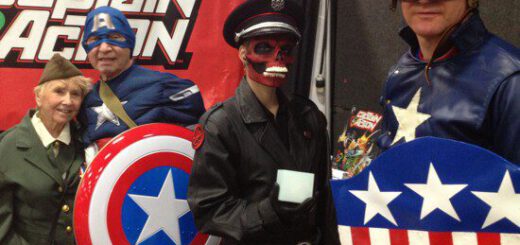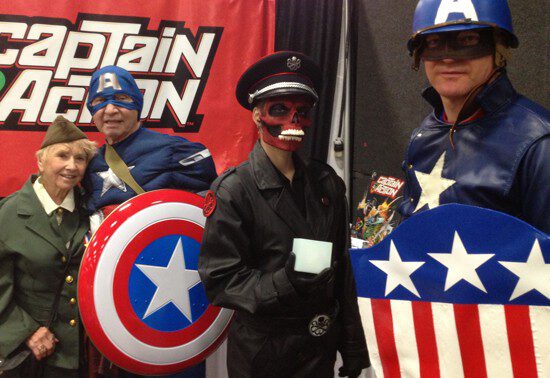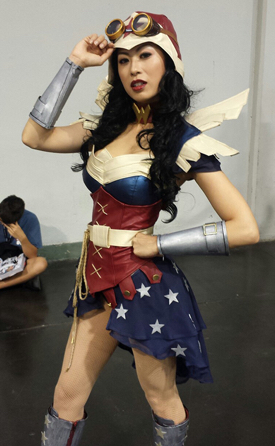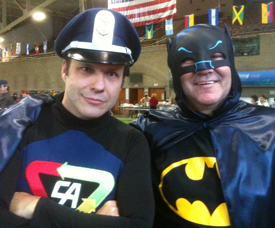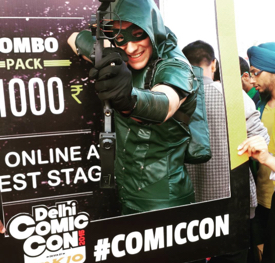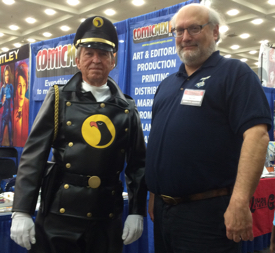Ed Catto’s Person of the Year
It’s that time of year to pause and look back at the best of and the coolest stuff of the year. It’s always fascinating to compare and contrast what you feel was more important with what everyone else feels what was important. It doesn’t really matter what the topic or industry is – there’s bound to be disagreements. I was especially amused when the roundtable on MSNBC’s Morning Joe show was criticizing Time magazine’s choice for Person of the Year. So naturally, I started thinking about who should be the Person of the Year in Geek Culture. And the more I thought about it – the more I was convinced this was the time for one of those high concept pronunciations. So for Geek Culture Person of the Year – I choose The Cosplayer.
The Cosplayer embraces and exemplifies so much of pop culture. Its almost as if cosplayer collectively are playing another role – the proxy hero for Geek Culture.
Cosplayers, by definition, dress in costumes at comic conventions. Oh, sure, we saw a lot of cosplay during Star Wars’ opening weekend, recently on Back to the Future Day and a slightly different flavor of it all at the various Santa Con pub crawls. But by and large, cosplayers cosplay at comic cons. And that’s where so many of the big stories have been this year. In 2016, there were more comic conventions than ever before. And there were more high quality conventions. And there were more fun small conventions. And more international conventions. Attendance records were routinely shattered and the convention season now stretches to cover the entire calendar from January to December.
But with this growth has also come some growing pains. The mix of attendees, and their reasons for attending conventions, is changing dramatically. Geek Culture at comic conventions now means so many things beyond comics. At some conventions, some dealers of old comics struggle to find their place in the new order. New, often unexpected, exhibitors are always jumping into the fray. Even the traffic patterns of convention aisles is changing, especially as taking photos is now a much bigger part of the experience than it once was.
And the Cosplayers aren’t the only reason for these changes – but they are a big part of it. Their goals at a convention might not include shopping, treasure hunting or snagging artwork from a favorite artist. On the other hand they bring a level of enthusiasm and creativity that’s not seen in any other gathering. So many gatherings of super-passionate fans, everything from the US Open Tennis Championships to the National Dog Show, encourage fans to be there as spectators – not participants.
Diversity and Acceptance
Baked into the idea of today’s cosplay is a wonderful non-judgmentalism. If you cosplay as Superman, you don’t have to be tall and muscular. You don’t have to be a man or white. You’re even applauded for stretching the original character’s concepts into something new and different. And that’s whey we may see a steampunk Superman or a Stormtrooper Superman.

So you don’t need a super-physique to cosplay super-characters. Sure, there’s some shallow, judgmental lunkheads out there, but the wonderful overwhelming mindset that cosplay brings is a celebration of all different body types. And in today’s hypercritical social media atmosphere, so often based on passing judgments via “likes”, it’s an important cultural counterbalance.
Back in the day, there were always a few blowhard know-it-all-fans (cough, cough) who took great pride in their knowledge of trivia and backstory about certain comic characters. New fans often felt condescension when these fans, the industry’s culture version of Wine Snobs, looked down their noses at the rest of fandom.
But Cosplaying has worked to change that. If someone wants to cosplay as a certain character, but doesn’t know all-there-is-to-know about a character, it’s fine! There have been reports of the old guard shaming new fans when they cosplayed “incorrectly” (i.e., not getting their characters’ details correct.) But lately, it seems that this unfortunate paradigm is flipped on its head, and now cosplayers are applauded for trying new things and celebrating them in the costumes.
How wonderful it is to see the way that Geek Culture now embraces families. I’m a second-generation comic fan. Both my mom and dad read and traded them back in the way. And my dad would flip through my new comics stack and enjoy the latest Jonah Hex or Master of Kung Fu.
At conventions today, it’s wonderfully common to see families cosplaying together. Usually, it’s a dad who’s introducing the kids to his favorite hobby. But at the recent New Jersey Comic Expo (it was a great show), I was thrilled to see two brilliant cosplayers dressed as Captain America and a female Red Skull bring their parents, portraying a Peggy Carter and Steve Rogers.
Cosplay Knows No Borders
Like Geek Culture, it’s a worldwide phenomenon. Cosplay is now a part of every major Comic Convention. In fact, this morning I was sent a Buzzfeed link showcasing “27 Cosplayers from Comic Con who are Absolutely Nailing this Costume Thing”.
So here’s a holiday toast to the creativity and passion of all 2015’s cosplayers. Congratulations on being voted as my “Geek Culture Person of the Year”. Now start planning for next year.
(Note: The Editor is profoundly embarrassed to note that it is he who is standing to our right of Blackhawk, in a photo taken at the ComicMix booth at this year’s Baltimore Comic Con.)

